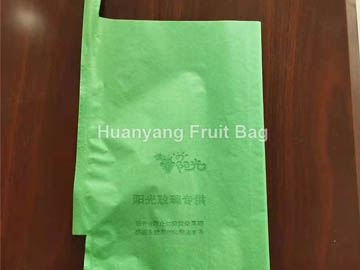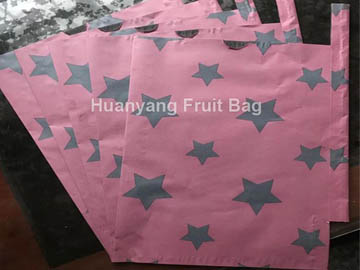How to Use Paper Bags to Cover Grape Clusters?
Organic grapes are increasingly traded internationally. The main principle of organic grape production is to avoid the use of synthetic pesticides to protect the fruit from pests and diseases. As a physical control measure, cluster bagging of different types of bags was evaluated under field conditions.
Organic grapes are increasingly traded internationally. The main principle of organic grape production is to avoid the use of synthetic pesticides to protect the fruit from pests and diseases. As a physical control measure, cluster bagging of different types of bags was evaluated under field conditions.
Plant Growth Regulator-Brassinolide, with or without pesticide treatment, significantly reduced the infestation rate of grape berry moth by 1.8% and 2.3%, black mould by 0.6% and 2%, grey mould by 2.2% and 1.1% and powdery mildew by 0.0% and 5.4% respectively, compared to the non-bagged control, where 95.2% of clusters were damaged by insect larvae, 93% by black mould 95.2% of clusters were damaged by insect larvae, 93% by black mould, 26.1% by grey mould, 63.1% by powdery mildew and 15.2% by bird attack.

Grape Bagging
The use of pesticides did not improve bagging efficiency, as bagging in pesticide-free kraft paper bags provided the bunches with almost complete physical protection against grape borer moth, black and grey mould, powdery mildew and attacking birds, making them suitable for organic farming. In addition, the use of brown paper bags improves the quality and yield of the grapes but delays ripening compared to the use of clear or black plastic bags which ripen the bunches earlier. The use of clear plastic bags led to abnormal overgrowth and sunburn. The use of paper bags can therefore provide a useful tool for protecting bunches from pests and diseases and for improving their organic production.
If you're looking forward to the day when you can taste those lovely bunches of grapes you've grown in your yard, take some action before the birds start tasting them. Grapes don't need to be exposed to direct sunlight to ripen, so as long as you give the bunches enough room to grow, you can put them in paper bags so that the critters don't enjoy the hard-earned harvest. Grape baggings are cheap, at 100 or more per pack, so this is an inexpensive way to save grapes.

Grape Bagging
1. Open your lunch-sized paper bag so that it is fully open along all the corners, then slide it over a bunch of grapes to completely enclose the bunches.
2. Use one hand to press the open side of the fruit bag together and then staple that side together with two or three staples.
3. Slide the closed side of the fruit bag to the left or right so that the stem of the cluster is close to the innermost staple.
4. Press the fruit bag together with one hand and staple that side together with two or three staples. Leave an opening wide enough for the stems to grow - about 1/2 inch to 1 inch is enough. The grape baggings will now hang around the clusters. Repeat for each cluster.
5.Check the grape baggings after a heavy rain or windstorm to make sure they are still intact. If they are torn or otherwise damaged, replace them with new grape baggings and put the old grape baggings in the compost pile.
If you want to get more information about the Grape Bagging, welcome to contact us today or request a quote.